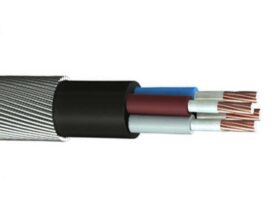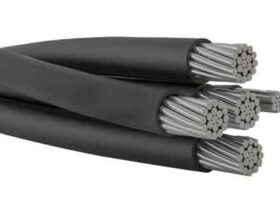In the dynamic world of electrical engineering, innovations constantly pave the way for more efficient and reliable solutions. Aerial Bunched Cables (ABC) stand out as a testament to such advancements, offering a versatile and modern approach to power distribution. In this blog post, we will delve into the intricacies of Aerial Bunched Cables, exploring their construction, benefits, applications, and how they have revolutionized the way electricity is transmitted.
Understanding Aerial Bunched Cables: Aerial Bunched Cables, commonly known as ABC, are a type of power cable designed for overhead power distribution. Unlike traditional bare conductors, ABC consists of multiple insulated conductors bundled together and supported by a messenger wire. This unique design brings about several advantages that contribute to the growing popularity of Aerial Bunched Cables in various applications.
Construction and Components: The construction of Aerial Bunched Cables typically involves multiple layers, each serving a specific purpose to ensure optimal performance and longevity. The key components include:
- Conductors:
- ABCs comprise insulated conductors made of high-quality materials like aluminum or copper.
- These conductors are designed to withstand environmental factors, ensuring durability and longevity.
- Insulation:
- Each conductor is individually insulated to prevent electrical leakage and ensure safety.
- The insulation materials used are chosen based on factors such as weather resistance and resistance to UV radiation.
- Messenger Wire:
- The messenger wire provides mechanical support to the bundled conductors.
- Typically made of galvanized steel, the messenger wire enhances the overall strength of the cable.
Benefits of Aerial Bunched Cables: The adoption of Aerial Bunched Cables is driven by several key advantages:
- Enhanced Safety:
- Individual insulation on each conductor reduces the risk of short circuits and electrical hazards.
- Reliability and Durability:
- ABCs are designed to withstand harsh environmental conditions, ensuring a longer lifespan compared to traditional bare conductors.
- Versatility:
- Suitable for various applications, including rural electrification, urban distribution, and power transmission.
- Reduced Maintenance Costs:
- The robust construction minimizes maintenance requirements, translating to cost savings over the cable’s lifespan.
Applications of Aerial Bunched Cables: Aerial Bunched Cables find applications in a wide range of scenarios, including:
- Rural Electrification:
- ABCs play a crucial role in extending power distribution to remote areas, contributing to socio-economic development.
- Urban Distribution:
- The versatility of ABCs makes them well-suited for urban power distribution networks, providing reliable electricity to densely populated areas.
- Power Transmission:
- ABCs are increasingly used in power transmission projects, offering a viable alternative to traditional bare conductors.
Conclusion: Aerial Bunched Cables have emerged as a groundbreaking solution in the realm of power distribution, addressing challenges and redefining standards. Their safety features, durability, and versatility make them a preferred choice for various applications, from rural electrification to urban distribution. As the demand for efficient and reliable power transmission solutions continues to rise, Aerial Bunched Cables stand tall as a symbol of progress in the field of electrical engineering.













Leave a Reply